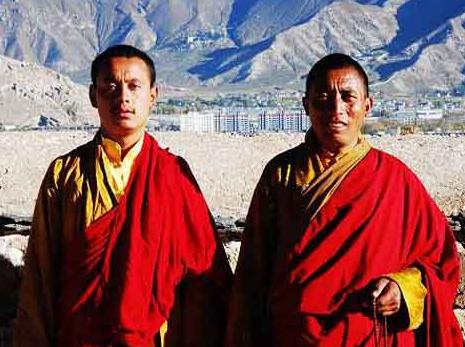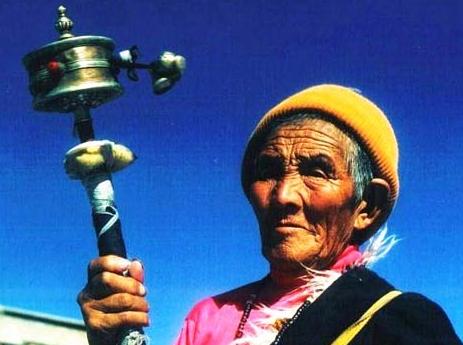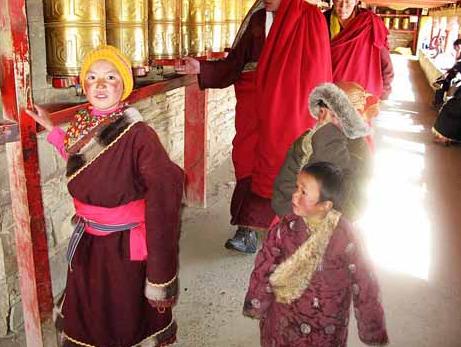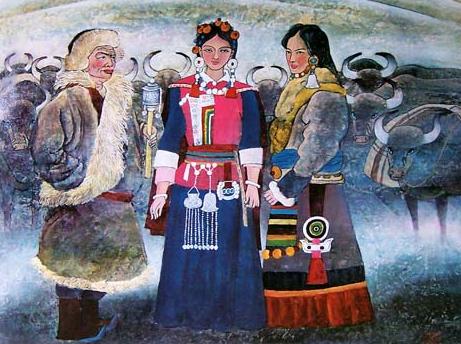
The Zang ethnic minority (also known as Tibetan) mainly live in the Tibetan Autonomous Region on the Tibetan Plateau£¬with some groupings in Qinghai, Gansu, Sichuan and Yunnan Provinces. The national census of 2000 showed that the Zang had a population of 5,416,021.

Language and Character:
The Tibetan language that belongs to the Tibetan-Burman group of the Sino-Tibetan language family is divided into three dialects and has both spoken and written forms.
Food:
Usually the Zang people eat three meals a day, but during the busy harvest season they will have four, five and often more. Their staple foods are tsamba, yak butter tea, mutton, and beef. Tsamba, made of highland wheat (Qingke) is convenient to carry around and eat whenever you want, so you can see many Tibetans carrying tsamba bags. As for drinks, they enjoy chang, a type of wine also made from Qingke, and milk tea. The Tibetan knife, sharp and delicate, is often used to cut meat.

Clothes:
In general the Zang men wear plaits on the head and women wear them on the shoulders. They all wear gowns with long sleeves. When they are dancing, their sleeves look wings flapping in the air. The monks wear cassocks whose colors vary according to their particular sect of Tibetan Buddhism.

The most important festival in the calendar is the first day of the Tibetan New Year. They clean their rooms in preparation for that day, paint symbols of auspice, and warmly greet each other in the morning. On the fifteenth day, they attend the Butter Lamp Festival.
On the Shoton Festival, the first day of the seventh Tibetan month, they take pots and wares to enjoy tea, yogurt and yak butter tea in a scenic place. The Great Prayer Festival and The Bathing Festival are also important festivals. If you are a guest in Tibet, the Zang people may give you a gift of a 'hada', a kind of white ribbon. This represents their warmest heart.





